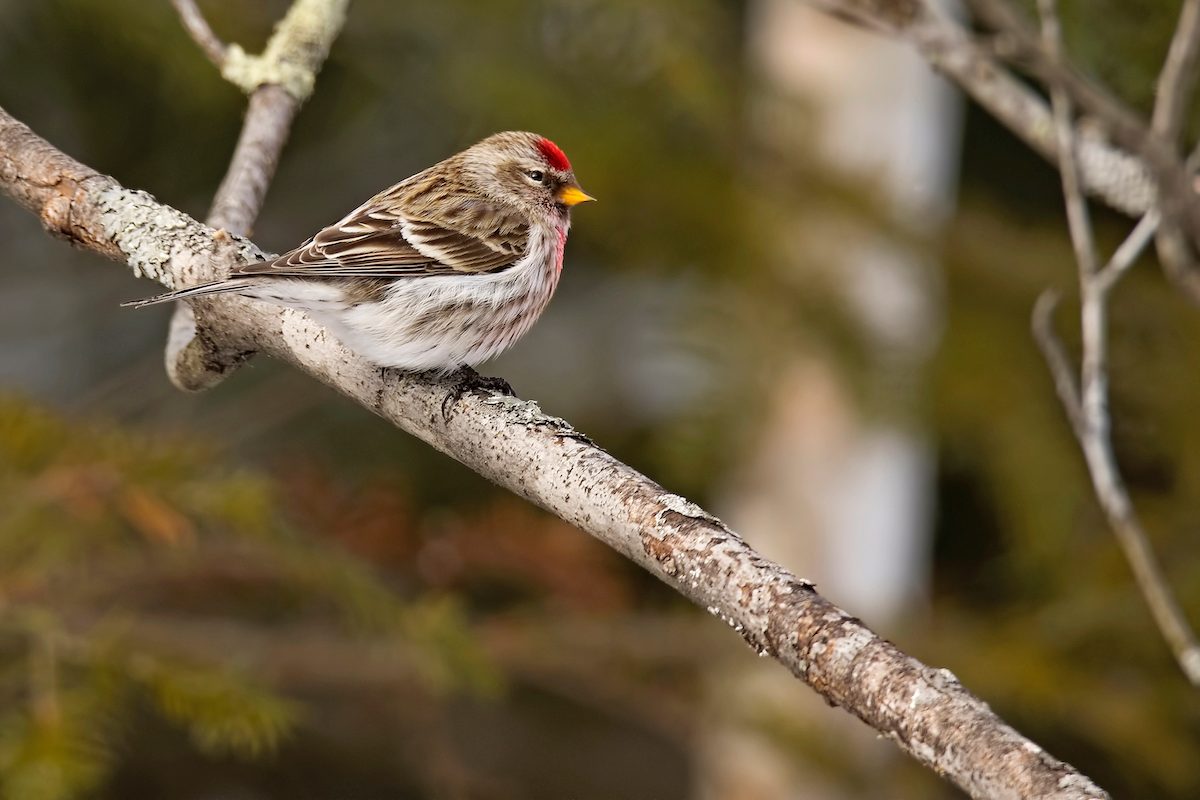A biologist reveals his winter finch forecast using wild food crop data. Find out what birds you can expect to see at your winter feeders.

Updated Winter Finch Forecast for 2024-25

On This Page
Track the Migration of Winter Birds

Most winters, birders in the United States can expect to see the typical feathered visitors: northern cardinals, black-capped chickadees, etc. But occasionally, a sudden surge of birds wanders outside the typical winter range. Biologist and ecologist Tyler Hoar predicts the movements of winter finches by analyzing the status of wild food crops such as spruce cones and mountain ash berries in Canada.
Tyler’s winter finch forecast is based on whether or not there is enough food to feed the hungry finches in the forests of Ontario. If there isn’t enough food, he’ll predict an irruption of birds that will venture down into the United States to fill their bellies.
The reasons behind these surprising, sporadic migrations aren’t always straightforward. (Researchers have found the causes vary from species to species.) Tyler makes it clear that these are just predictions. But plenty of birders rely on his winter finch forecast to get a more accurate sense of what birds to look for in winter.
The 2024-25 Winter Finch Forecast
Purple Finch

Tyler’s forecast for the winter of 2024-25 indicates that many birds are less likely to leave the boreal forest this winter. But you can still watch for some new visitors in your backyard, including purple finches.
Tyler says, “A visible movement is already moving south, as reported by Hawk Ridge Hawk Watch near Duluth, Minnesota, and central New York.” He indicates these birds should leave Canada with a likely moderate flight to the Great Plains and southern United States.
Redpoll

Tyler also predicts this to be a better year for seeing redpolls, depending on snow cover in the fields where they feed on weed seeds.
“Areas in the upper midwestern states and the Maritime provinces may see more redpoll movement as southbound birds transit the holes in the boreal cone crop,” he says.
Evening Grosbeaks

Given that the berry crop across the eastern boreal forest has been picked over, visible movement of this species was observed in August. Tyler notes that there should be a moderate flight southward of evening grosbeaks in fall.
“Evening grosbeaks should visit areas from the Maritime provinces south towards Pennsylvania. Areas even further south to the mid-Atlantic states may see grosbeaks this winter,” he says.
Learn how to help birds in cold winter weather.
Other Winter Finches
Many pine siskins, white-winged crossbills, Bohemian waxwings, and pine grosbeaks will likely stay in the boreal forest and western mountain areas this year.
To attract many of these birds, offer nyjer and black-oil sunflower seeds in your feeders and plant berry trees and bushes, including crabapple and mountain ash.




















